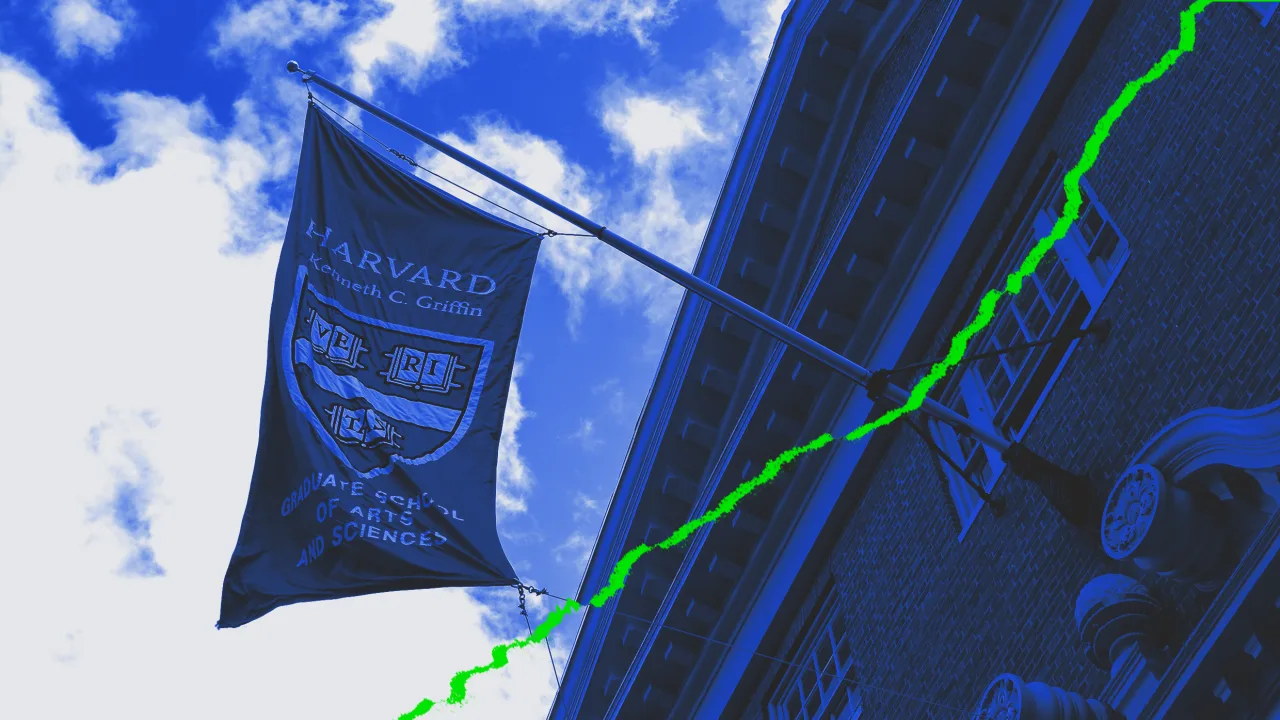This Seattle startup is planning to mine on the moon. It could bring nuclear fusion closer to reality
Humans have long been transfixed by the moon, awed and inspired by its reassuring presence in the night sky and its influence on the tides. In recent decades, though, our fascination with our nearest celestial neighbor has become somewhat more opportunistic: The moon contains valuable resources, and governments and companies are eager to get their hands on them. One such resource is helium-3 (He-3), a gas that some experts say could unlock clean and abundant energy on Earth as a fuel for fusion. It’s this gas that Interlune, a Seattle-based startup, has its sights on. The company wants to be the first to commercialize space resources, starting with He-3, which it plans to begin harvesting from the moon and selling on Earth by the end of the decade. Helium-3 is used mostly in medical diagnostics and national security, but it has great potential to unlock groundbreaking technological advancements, the most tantalizing of which is nuclear fusion. Fusion is what powers the stars, and as the climate crisis deepens, scientists are desperately trying to harness it in reactors to produce abundant energy without the use of fossil fuels. He-3 is a desirable fuel for fusion reactors because it would produce very little dangerous radioactive waste. [Photo: Interlune] “Helium-3 fusion reactors open up the opportunity to have power available for people on Earth in a way that’s never been available before,” says Aaron Olson, a research physicist at NASA’s Kennedy Space Center who has studied helium-3 extraction. “And that’s not only for those of us who happen to live in areas where we have grids that function really well, but it could bring energy to people who live in areas like sub-Saharan Africa, where 90% of the population doesn’t have access to electricity.” The problem is that He-3 is extremely rare on Earth, and therefore very expensive. A kilogram of the stuff will set you back roughly $20 million. Most of the terrestrial supply comes from the decay of tritium, which is a byproduct of nuclear reactors and aging nuclear weapons. The United States has been rationing He-3 since 2010. By contrast, the moon holds an abundance of He-3. The isotope is emitted from the sun’s corona and carried through the solar wind, and because the moon isn’t protected by an atmosphere or magnetic field, these particles have been embedding themselves in the lunar soil—or regolith—for billions of years. Recent estimates suggest the moon has about 1.1 million metric tons of He-3, compared to Earth’s reserves of just 1.6 tons. “Helium-3 is the only resource worth going all the way to the moon and back for,” Interlune’s director of business development, Nina Hooper, explained. “Now it’s up to us to go develop the technology that’s going to help us extract it.” Interlune’s plan is to send its “harvesters” to an area that’s about a mile wide and located near the moon’s equator on its near side, or the side that’s always visible to Earth. These unmanned machines will dig into the top three meters of lunar regolith, crush the rocks, extract the He-3 gas, and then put the regolith back where it belongs. “When we’re done, it looks like a tilled field,” says Interlune CEO and cofounder Rob Meyerson, who previously served as president of Blue Origin. Interlune is aiming to start with two test missions, one in 2027 and another in 2029, to measure He-3 levels on the moon, harvest it on a small scale, and bring some back to Earth. It wants to go to market with 20 kilograms of He-3 in 2030, ramping up to 100 kilograms over five years. “That will do a great job to stabilize the supply chain,” Meyerson adds. [Photo: Interlune] Could it also unlock the future of clean energy? Despite promising advances in fusion science, commercial fusion is still a ways off. “There is still a lot of work to be done before a functional reactor goes online,” says NASA’s Olson. “There are still questions that persist as to how quickly that can happen.” An abundance of He-3 for fusion research could, however, help speed up that process. In the meantime, Interlune has another sector in mind for its first target market: quantum computing. This market is projected to balloon between now and 2030, with big tech players like IBM, Nvidia, and Apple pouring billions into quantum tech research and development with the hopes of creating breakthrough innovations and rapidly solving stubborn problems across science, medicine, and other fields. Helium-3 helps keep these supercomputers cool enough to function efficiently, and Meyerson says Interlune has already secured contracts with “more than one” company and letters of intent for “more than a billion dollars” worth of He-3 even before it has demonstrated its technology. “These customers are relatively price insensitive, so they’re willing to pay something near the current market price, and they’re really, really eager to secure supply,” he says. This week, Interlune announced Maybell Quantu
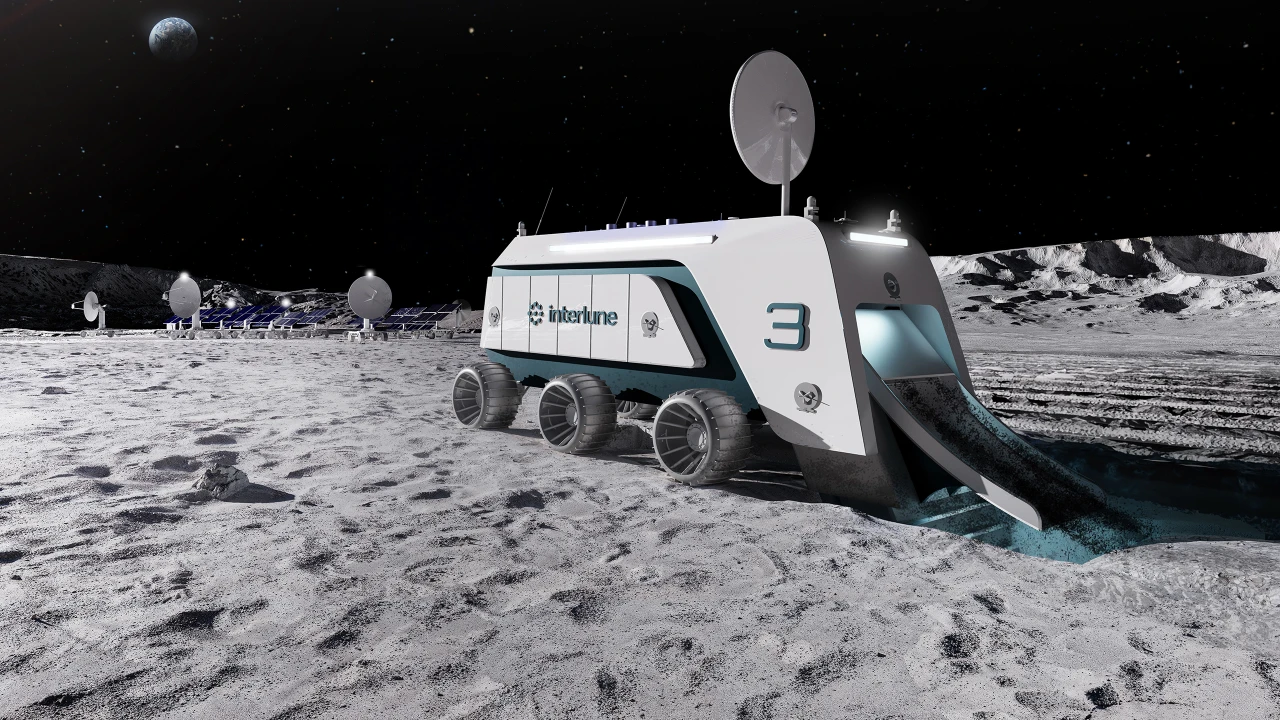
Humans have long been transfixed by the moon, awed and inspired by its reassuring presence in the night sky and its influence on the tides. In recent decades, though, our fascination with our nearest celestial neighbor has become somewhat more opportunistic: The moon contains valuable resources, and governments and companies are eager to get their hands on them.
One such resource is helium-3 (He-3), a gas that some experts say could unlock clean and abundant energy on Earth as a fuel for fusion. It’s this gas that Interlune, a Seattle-based startup, has its sights on. The company wants to be the first to commercialize space resources, starting with He-3, which it plans to begin harvesting from the moon and selling on Earth by the end of the decade.
Helium-3 is used mostly in medical diagnostics and national security, but it has great potential to unlock groundbreaking technological advancements, the most tantalizing of which is nuclear fusion. Fusion is what powers the stars, and as the climate crisis deepens, scientists are desperately trying to harness it in reactors to produce abundant energy without the use of fossil fuels. He-3 is a desirable fuel for fusion reactors because it would produce very little dangerous radioactive waste.
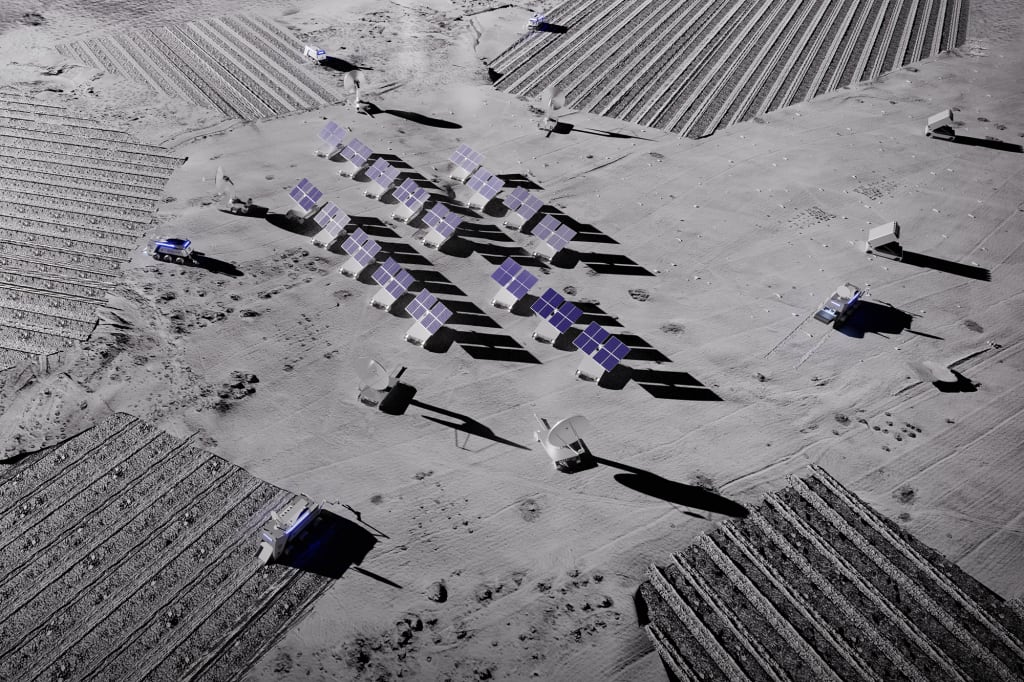
“Helium-3 fusion reactors open up the opportunity to have power available for people on Earth in a way that’s never been available before,” says Aaron Olson, a research physicist at NASA’s Kennedy Space Center who has studied helium-3 extraction. “And that’s not only for those of us who happen to live in areas where we have grids that function really well, but it could bring energy to people who live in areas like sub-Saharan Africa, where 90% of the population doesn’t have access to electricity.”
The problem is that He-3 is extremely rare on Earth, and therefore very expensive. A kilogram of the stuff will set you back roughly $20 million. Most of the terrestrial supply comes from the decay of tritium, which is a byproduct of nuclear reactors and aging nuclear weapons. The United States has been rationing He-3 since 2010.
By contrast, the moon holds an abundance of He-3. The isotope is emitted from the sun’s corona and carried through the solar wind, and because the moon isn’t protected by an atmosphere or magnetic field, these particles have been embedding themselves in the lunar soil—or regolith—for billions of years. Recent estimates suggest the moon has about 1.1 million metric tons of He-3, compared to Earth’s reserves of just 1.6 tons. “Helium-3 is the only resource worth going all the way to the moon and back for,” Interlune’s director of business development, Nina Hooper, explained. “Now it’s up to us to go develop the technology that’s going to help us extract it.”
Interlune’s plan is to send its “harvesters” to an area that’s about a mile wide and located near the moon’s equator on its near side, or the side that’s always visible to Earth. These unmanned machines will dig into the top three meters of lunar regolith, crush the rocks, extract the He-3 gas, and then put the regolith back where it belongs. “When we’re done, it looks like a tilled field,” says Interlune CEO and cofounder Rob Meyerson, who previously served as president of Blue Origin.
Interlune is aiming to start with two test missions, one in 2027 and another in 2029, to measure He-3 levels on the moon, harvest it on a small scale, and bring some back to Earth. It wants to go to market with 20 kilograms of He-3 in 2030, ramping up to 100 kilograms over five years. “That will do a great job to stabilize the supply chain,” Meyerson adds.
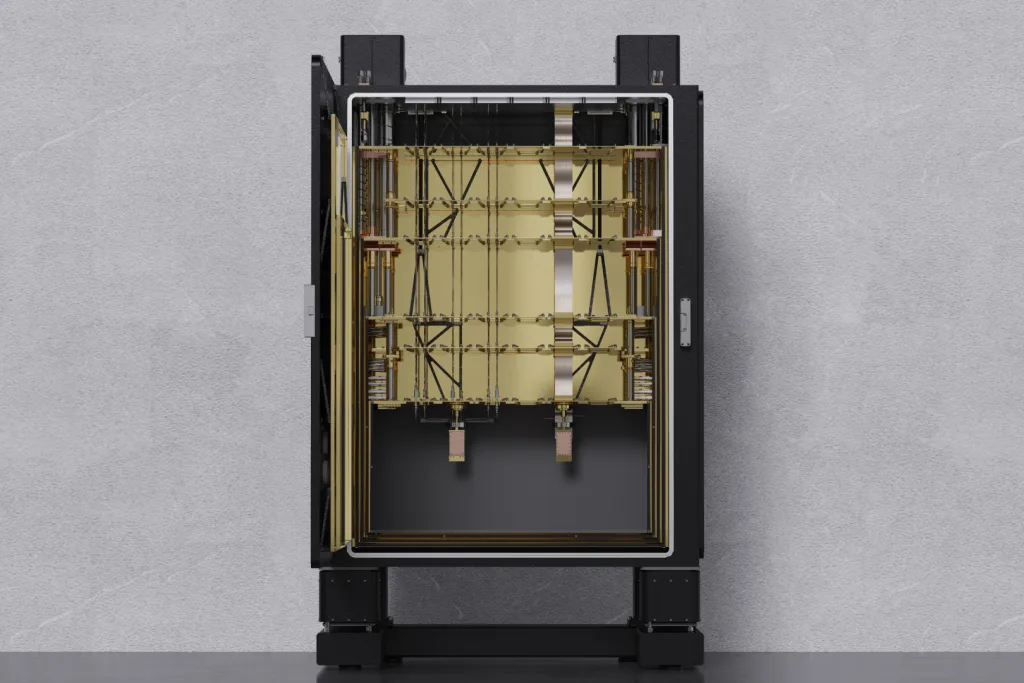
Could it also unlock the future of clean energy? Despite promising advances in fusion science, commercial fusion is still a ways off. “There is still a lot of work to be done before a functional reactor goes online,” says NASA’s Olson. “There are still questions that persist as to how quickly that can happen.” An abundance of He-3 for fusion research could, however, help speed up that process.
In the meantime, Interlune has another sector in mind for its first target market: quantum computing. This market is projected to balloon between now and 2030, with big tech players like IBM, Nvidia, and Apple pouring billions into quantum tech research and development with the hopes of creating breakthrough innovations and rapidly solving stubborn problems across science, medicine, and other fields.
Helium-3 helps keep these supercomputers cool enough to function efficiently, and Meyerson says Interlune has already secured contracts with “more than one” company and letters of intent for “more than a billion dollars” worth of He-3 even before it has demonstrated its technology. “These customers are relatively price insensitive, so they’re willing to pay something near the current market price, and they’re really, really eager to secure supply,” he says.
This week, Interlune announced Maybell Quantum, a quantum infrastructure company, as its first commercial customer. Maybell agreed to buy “thousands of liters” of He-3 to be delivered between 2029 and 2035. The U.S. Department of Energy has also agreed to buy He-3 from Interlune in its quest to top up its reserves.
Not everyone is eager to see the moon become an industrial hub, though. Astronomers are particularly worried about mining because the moon is an important outpost for space science thanks to how quiet, still, and cold it is. For example, the far-side of the moon is “the most radio quiet part of the inner solar system,” explains Richard Green, an astronomer emeritus at the University of Arizona’s Steward Observatory and a vocal advocate for preserving lunar science. That makes it the best place to use radio astronomy to learn about the universe and look for signs of life beyond Earth. “If the mining equipment is next door and blasting rocks and digging things up, that would just be inconsistent with the stable platform that those really sensitive detections need,” Green adds.
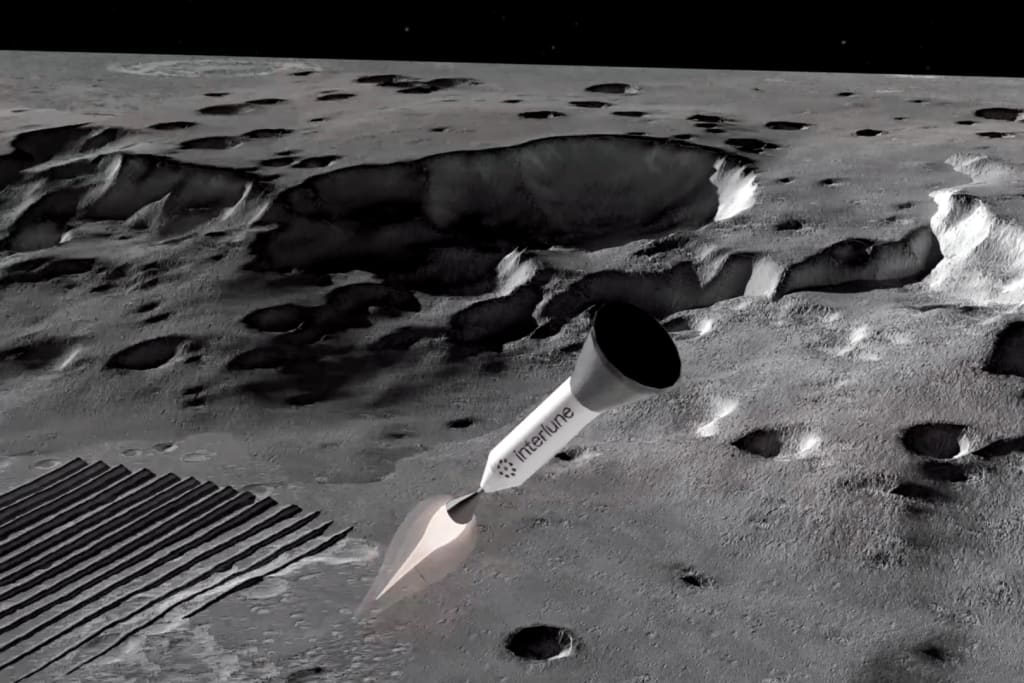
He and other researchers want to see the creation of an international system that evaluates claims to certain regions on the moon and allows scientists to “reserve” sites in advance so they can study the area before any mining takes place. “It’s not that there’s anything wrong with mining, it’s a legitimate activity,” he says. “But so is science. How do we set up a system of communication and coordination that doesn’t lead to conflict?”
The existing rules around space mining are fairly new, and don’t offer much help. A 2015 U.S. law ruled that private American companies can own any space resources they mine. In 2020, NASA’s Artemis Accords sought to introduce some guidelines on the practice of harvesting space resources, stating that any extraction must be done in compliance with the 1967 Outer Space Treaty. That means countries carrying out mining would have to do so for the benefit of all mankind. They’d have to avoid “harmful contamination of space and celestial bodies,” and would be liable for any damage they cause.
All of that said, regulations might be hard to enforce. “There are no police that are going to land on the moon,” says Green. (Neither China nor Russia have signed onto the Artemis Accords, which aren’t legally binding anyway.)
Meyerson is quick to underscore that what Interlune wants to do isn’t traditional mining. “There are no chemicals used to strip the helium-3 out of the material,” he says. “You’re not leaving contaminated tailings behind. So as far as comparing this to mining, it’s just 180 degrees apart.” He believes that by being the first to harvest moon resources, Interlune can set the standard as the lunar gold rush accelerates.
Eventually, Interlune plans to expand its scope to harvest other lunar resources that could be used to build infrastructure and produce rocket fuel on the moon, all of which could serve as a stepping stone for future space exploration. “We’re in this for the long run of building an in-space economy,” says Meyerson. “We would be processing other resources on the moon, like water that we can turn into rocket fuel, metals like aluminum and titanium and silicon, and then construction material.”
Some proponents of space mining also argue it’s an environmental Hail Mary. “There is the notion of the Earth becoming an oasis,” says Olson. “It’s an idea that harvesting resources, whether it be the moon or other places in space, could help us preserve the Earth for future generations in a way where maybe we’re not doing as much damaging extractive work on Earth, and some of that could be put in places that are, for lack of a better term, barren.”





























































































































































